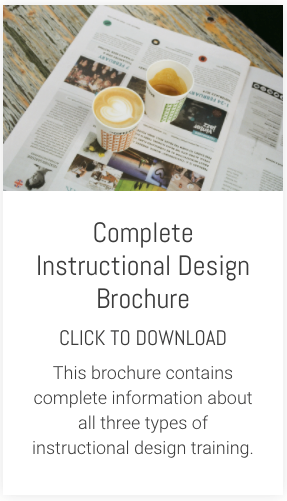This, I believe, is the elephant in the room for most people in a learning and development role. The one thing people will sometimes pay lip service to. But the one thing they never really want to think about beyond an end of course ‘happy sheet’.
You know what I’m talking about. It’s the question of quantifying in some form, the impact and effectiveness of the training we design and deliver.
We have a real hard time getting clients to engage with this when we are talking to them about a potential development project.
After delivering some in-house instructional design, we even encounter resistance to taking part in our own light-touch follow-up programme, which helps evaluate the usefulness of what we deliver. It takes very little time to participate. It is completely free of charge. It is almost always helpful for those who do take part. Yet almost no-one wants to.
A couple of thoughts. If you think evaluating impact tis only about, boiling success down to the last pound or penny of return on investment, I get why you might be very hesitant. There are loads of factors outside learning and development's direct control that can have an impact on the effectiveness of the training provided.
So you could end up on the awards podium (or in the dog-house) when you really don’t deserve to be, just because under a certain set of circumstances, the numbers came out good (or bad).
That is a bit like walking along the high wire with no safety net below. Understandably, not many people are up for that.
But thinking about impact and effectiveness doesn’t have to be like that. The alternative starting point is that we are not in the business of instantly achieving a prized metric but we are there to support continuous improvement, over the longer term.
This, it seems to me, is a more honest approach and a more achievable one. It acknowledges from the start that a single ‘dose’ of training almost certainly won’t cure any performance problem or performance need.
And it recognises that a more consistent course of ‘treatment’ over a period of time is what likely will. It also recognises that not all ‘patients’ are equal and some might need a longer course of ‘treatment’ than others.
What I’m talking about is a well-designed approach to achieving impact, which starts with a training intervention, follows up after that with learners to see what’s working and what’s not, provides short, simple follow-up interventions, as required and gradually course adjusts to help achieve a good outcome both with current and future learners.
It doesn’t have the big bang impact of a large ROI number but it almost certainly guarantees visible performance improvements over time and will most definitely raise your profile and the respect for learning and development across the organisation.
In reality, it’s not hugely difficult to set up and build in this kind of approach at the beginning of a project. So it begs the question, what’s holding us back?
Want to start taking a holistic approach to looking at the impact and effectiveness of the learning you design and deliver within your organisation? Take a look at the programme we offer.











